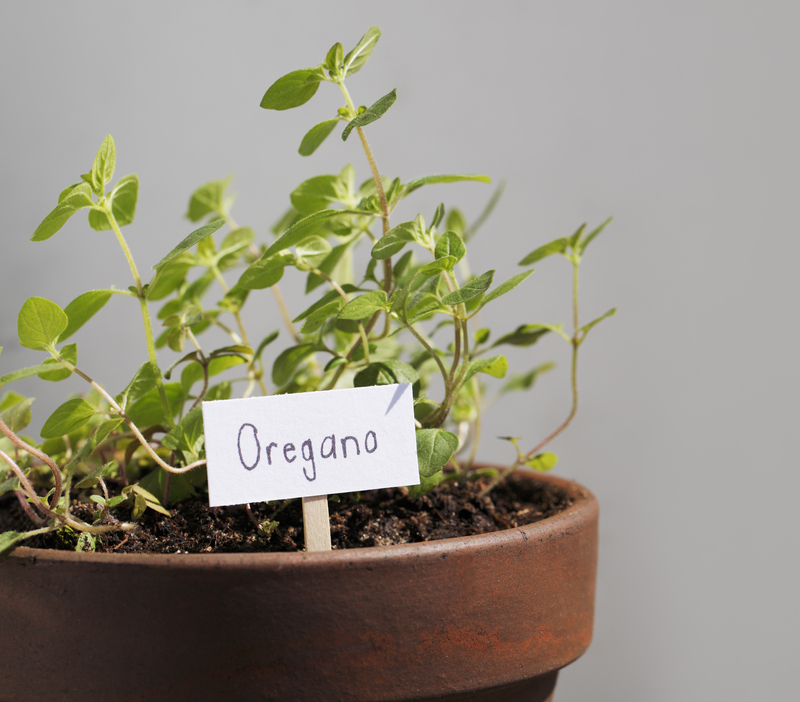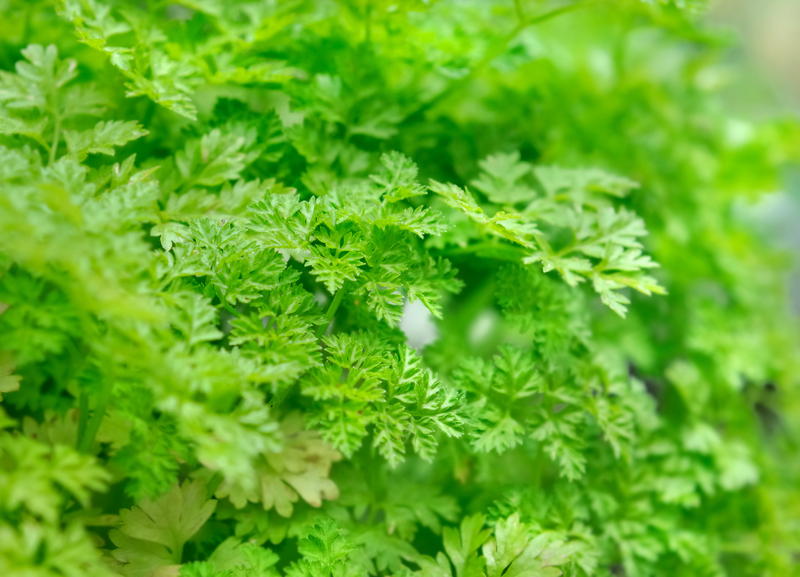From Drab to Fab: Starting Your Garden Revival Journey
Posted on 09/09/2025
From Drab to Fab: Starting Your Garden Revival Journey
Is your garden tired, uninspiring, or overgrown? Revamping your garden can seem daunting, but with the right guidance and a dash of creativity, you can transform your outdoor space from drab to fab. Whether you have a tiny urban plot or a sprawling suburban yard, beginning your garden revival journey unlocks endless possibilities. This comprehensive guide will walk you through each step, offering ideas, tips, and inspiration to help you create a fabulous garden that reflects your style and meets your needs.

Why Start a Garden Makeover?
A garden transformation is more than just a cosmetic upgrade. When you commit to reviving your garden, you enhance your home's curb appeal, promote environmental sustainability, and create a relaxing haven for yourself and your loved ones. Here are just a few compelling reasons to begin your garden renewal journey:
- Boost Property Value: A stunning garden can significantly increase your home's market value.
- Promote Wellbeing: Spending time in nature lowers stress and boosts mood.
- Support Local Wildlife: Revived gardens can provide essential habitats for pollinators and other beneficial creatures.
- Personal Enjoyment: There's nothing quite like relaxing, entertaining, or gardening in a beautiful space you've designed yourself.
Assessing Your Current Garden
1. Take a Step Back
Before you grab your shovel or buy new plants, evaluate your current garden. Take photos from different angles and spend time observing how sunlight, shade, and wind affect your outdoor area. Note which plants are thriving and which are struggling. Is there clutter or debris? Are there areas you never use? This critical first step sets the foundation for your drab-to-fab transformation.
2. Identify Your Challenges
Every garden revival journey comes with its unique set of challenges. Common issues include:
- Poor soil quality or drainage
- Overgrown shrubs or weeds
- Bare or patchy lawns
- Lack of structure, focal points, or visual interest
- Limited usable space or privacy
Write down your main concerns and wish-list items, as these will inform your garden makeover plan.
Planning Your Garden Revival
1. Set Clear Goals
What do you want your revamped garden to achieve? A productive vegetable patch, a pollinator-friendly oasis, a place for entertaining, or a low-maintenance retreat? Define your vision and prioritize features that align with your lifestyle and aesthetic preferences.
- Entertainment: Add a patio, outdoor kitchen, or fire pit area
- Family Play: Safe play area, lawn, or sandbox
- Growing Food: Vegetable beds, greenhouse, or fruit trees
- Wildlife Gardening: Native flowers, water features, or bug hotels
*A clear vision ensures your garden makeover stays focused and prevents costly mistakes down the line.*
2. Set a Realistic Budget
Make a list of anticipated garden transformation costs, from hiring professionals to buying plants, soil, and hardscaping materials. Don't forget tools, mulch, and decor. It's wise to plan for a contingency fund for unexpected expenses. A smart approach is to tackle your garden revival in stages, spreading out costs and allowing you to learn and adapt as your space evolves.
3. Choose a Garden Style
There are endless styles to inspire your garden makeover journey. Here are some popular options:
- Modern Minimalist: Clean lines, neutral colors, and architectural plants
- Cottage Garden: Lush, colorful, and informal with mixed flowers and herbs
- Japanese Zen: Gravel, rocks, water, and carefully pruned evergreens
- Wildlife-Friendly: Native plants, wildflower meadows, and naturalistic ponds
- Mediterranean: Olive trees, lavender, terracotta pots, and gravel paths
Research which styles resonate with you and what suits your climate and the architecture of your home.
Soil, Sun, and Site Analysis: Key to Your Garden Transformation
1. Know Your Soil
Soil quality can make or break your garden's success. Test your soil texture (clay, sand, silt, loam), pH, and nutrient content using a store-bought kit or by sending samples to a lab. Amending your soil with compost, manure, or organic matter is often the quickest way to boost fertility and structure.
2. Analyze Sun and Shade Patterns
Map where the sun rises and sets, noting which areas receive full sun (6+ hours), partial sun, or persistent shade. This information determines what plants will thrive where and helps you position new features for maximum enjoyment and plant health.
3. Check Drainage and Slope
Observe your site after heavy rain. Does water pool in low spots? Is your garden on a slope, causing erosion? Address drainage issues early by contouring the soil, installing French drains, or constructing raised beds. Ensuring good drainage is crucial for a healthy garden revival.
Decluttering and Clearing the Canvas
Out with the Old
A beautiful garden revival often starts with a clean slate. This means:
- Removing weeds, dead or diseased plants, and debris
- Pruning overgrown shrubs and trees to restore light and shape
- Fixing or removing dilapidated fences, sheds, or hardscape features
- Culling unused pots, toys, and garden furniture
*Decluttering not only improves aesthetics but also makes it easier to plan and implement your new garden features.*
Designing Your Revamped Garden
1. Sketch a Blueprint
Draw a scaled plan of your garden, noting existing trees, buildings, and boundaries. Sketch in your desired features--patios, beds, lawns, water features. Experiment with shapes, curves, and lines for visual interest.
- Use a garden design app or graph paper for precision
- Mark sunny vs. shady spots
- Try multiple layouts before finalizing your design
2. Create Structure with Hardscaping
Pathways, patios, retaining walls, and decks provide much-needed structure to your revived garden. Choose materials that fit your style and will stand up to local weather. Hardscaping defines areas, enhances flow, and reduces maintenance in the long run.
3. Add Focal Points and Layers
To transition your garden from drab to fab, every view should have a focal point. These can be:
- An ornamental tree or bold shrub
- A water feature (fountain, pond, birdbath)
- An eye-catching sculpture or bench
- A vibrant grouping of pots or flower beds
Layers of plants--groundcovers, perennials, shrubs, and trees--create a lush, dynamic look and attract wildlife year-round.
Selecting the Best Plants for Your Garden Revival
1. Plant for Year-Round Interest
Choose plants with a range of bloom times, leaf colors, and textures to ensure your garden remains beautiful through all seasons. Combine evergreens for winter structure, spring bulbs, summer perennials, and autumn color from deciduous trees or grasses.
2. Embrace Native and Drought-Tolerant Plants
Native species thrive with less water and care, while also supporting pollinators and local wildlife. If you live in a dry region, select drought-tolerant varieties to ensure a resilient, sustainable garden that remains fab even in tough conditions.
3. Consider Maintenance Needs
Be honest about how much time you can dedicate to gardening. Low-maintenance beds filled with tough perennials, mulch, and automated irrigation keep your project stress-free while looking stunning.
Making It Fabulous: The Power of Finishing Touches
Add Lighting
Strategically placed solar or LED lights highlight paths, focal points, and seating areas, extending the enjoyment of your revived garden into the evening hours.
Incorporate Garden Art
Sculptures, wind chimes, mirrors, or mosaic stepping stones add personality and charm. Art pieces reflect your style and create conversation starters for guests.
Give Furniture a Facelift
Repaint, replace cushions, or upcycle old benches and tables to bring color and comfort to your outdoor space.
Add a Water Feature
A small pond, fountain, or even a bird bath not only enhances the look of your garden, but also creates a soothing atmosphere for relaxation and attracts birds and beneficial insects.
Mulch and Edge Beds
Fresh mulch not only retains moisture and suppresses weeds, but immediately freshens up garden beds. Edging with bricks, stones, or metal strips creates a crisp, professional finish.
Maintenance: Keeping Your Garden Looking Fabulous
A revived garden needs regular care to stay at its best. Key maintenance tasks include:
- Weeding and deadheading flowers
- Watering deeply and mulching seasonally
- Fertilizing and composting for healthy soil
- Pruning shrubs and trees as needed
- Refreshing seating, lighting, and decor
*The more time you spend in your garden, the sooner you'll notice small issues before they become big problems.*
Garden Revival FAQs
- How long does a garden makeover take?
It depends on your project's scale, but phased approaches can yield visible improvements in just a few weekends. - Can I revive my garden on a budget?
Absolutely! Prioritize key areas, propagate plants, swap cuttings with neighbors, and upcycle materials for creative savings. - What if I have poor soil or drainage?
Focus on raised beds, add organic matter, and address drainage issues early for the best results. - Should I hire a professional gardener or designer?
If your budget allows, a designer can bring creativity and expertise, but many beautiful garden revivals are achieved with DIY planning and research.

Success Stories: Inspiring Garden Makeovers
If you need motivation to start your own garden revival journey, check out transformation stories online or in gardening magazines. Seeing before-and-after photos will inspire you with creative solutions and the potential in every outdoor space.
Conclusion: Ready to Begin Your Transformation?
Turning your dull, neglected garden into a personal paradise is a rewarding challenge. By thoughtfully assessing your space, planning your garden makeover, choosing resilient plants, and adding your creative touch, you will soon enjoy a fabulous outdoor oasis. Remember, every thriving garden begins with a single step--start your garden revival journey today, and watch your outdoor space go from drab to truly fab!
If you found this guide helpful, share your success story and subscribe for more inspirational garden tips and ideas!



